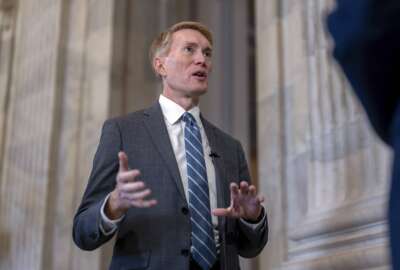Ensuring that you have a proper data strategy, a proper data governance strategy is fundamental. Given the lessons learned over the last couple of decades, we are happy to see that many organizations are understanding the importance on that front.
Henry Sowell
Chief Information Officer, Cloudera Government Solutions
If you believe you are under an attack, if you have to go to multiple different sources to try to find that answer, it makes your response time more difficult and doing more advanced analytics isn’t even available to you.
Henry Sowell
Chief Information Officer, Cloudera Government Solutions
For much of the past 15 years, public and private sector organizations have come to realize the value of data. Or as some have said, “Data is the new oil.”
But what happens when there is too much data? Or what if your data is dirty and unstructured?
These are the challenges many agencies face every day. And these challenges will only increase as agencies collect more and more data.
For instance, the Data.gov portal has more than 235,000 data sets with more than 150,000 of them being the geospatial kind.
At the same time, agencies are realizing the value of data more and more through the use of predictive analytics and tools that include artificial intelligence and machine learning capabilities.
The Trump administration recognized agencies need help in managing all of this data.
That is why the Office of Management and Budget released the federal data strategy last year. In December, OMB detailed an action plan that includes 20 agency actions, including the launch of a governmentwide Chief Data Officers Council, an assessment of the workforce’s data literacy and data skills.
Underlying all of this data, of course, is security. How can agencies ensure secure information sharing? This concept becomes even more important during the coronavirus pandemic.
Henry Sowell, the chief information officer at Cloudera Government Solutions, said agencies are struggling to manage and deal with the volume and velocity of data coming their way.
“In many government environments, they have different data producers such as a data warehouse or machine learning tools or edge devices, and many times each of these systems have their own priority data catalog and policies that secure their data and control access,” Sowell said on the Innovation in Government show. “It’s further exacerbated when you have to connect two or more of those systems, which is often a critical use case. Each time you transition between these different systems, you have to reset your schema, security and access policies so they remain compliant across your organization.”
This issues becomes even more challenging as agencies continue to live in a hybrid cloud environment where some data is on-premise and some in the cloud.
And with each additional layer comes more security risk and the more people and time resources it takes to manage the architecture.
“Considering your data governance strategy after you have implemented a system is extremely expensive and resource intensive. [Some agencies] have seen this challenge where at some points they had to actually start over from the ground level,” Sowell said. “Ensuring that you have a proper data strategy, a proper data governance strategy is fundamental. Given the lessons learned over the last couple of decades, we are happy to see that many organizations are understanding the importance on that front.”
While agencies are all at different stages of their data governance efforts, Sowell said there are some common themes emerging including an increased knowledge sharing around strategies and the acknowledgement of the need for these foundational elements to take full advantage of data to improve mission effectiveness.
“It is more widely understood that data is one of the most important assets of an organization. When you look at the various technologies like internet of things, there are more edge devices, they have more networks that they are connecting to, they are geographically dispersed and there are other factors that are greatly increasing the amount of data organizations have to process,” he said. “Some of those things are driving the priorities. Understanding that data-drive decisions are hugely important and beneficial to their mission, and they have this vast amount of data and I think you have more organizations that are understanding the cost of not doing it well.”
The value of the data means agencies are doing a better job with the underlying foundational pieces of data like policy and security architectures to internally and externally protect the information but still support sharing.
“You have to have a cybersecurity perspective of understanding the data, where it’s at, what is the threat posture. You have to understand the threat posture beyond the just your data center. You know have a significant amount of external devices,” Sowell said. “Look at the situation right now where there are many, many government employees that are working from home, and that are accessing from many different networks. These are huge challenges that agencies have to tackle and their privacy stance on how they protect their data and how they govern that effectively are paramount right now.”
Sowell said for agencies to truly understand their cyber posture, one key first step is to co-locate all data from edge devices, routers and other network devices.
“Having all of these things dispersed, you sometimes have an issue when it comes to being able to understand the threat,” he said. “If you believe you are under an attack, if you have to go to multiple different sources to try to find that answer, it makes your response time more difficult and doing more advanced analytics isn’t even available to you.”
Once you co-locate the data, Sowell said the possibilities for using advanced cyber capabilities expand greatly including role-based alerts and analytics using artificial intelligence and machine learning.
 About Cloudera
About Cloudera
At Cloudera, we believe that data can make what is impossible today, possible tomorrow. We empower people to transform complex data into clear and actionable insights. Cloudera delivers an enterprise data cloud for any data, anywhere, from the Edge to AI. Powered by the relentless innovation of the open source community, Cloudera advances digital transformation for the world’s largest enterprises.
Copyright
© 2024 Federal News Network. All rights reserved. This website is not intended for users located within the European Economic Area.










